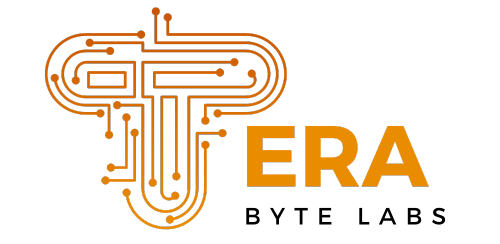The process of manufacturing printed circuit boards (PCBs) is intricate, requiring precision and attention to detail at every stage. While advancements in technology have streamlined many aspects of PCB production, several challenges remain prevalent in the industry. Manufacturers must navigate issues related to design, materials, and quality control to ensure that the final product functions as intended.
For those looking to overcome these hurdles, understanding the most common challenges in PCB manufacturing is crucial. Partnering with a reliable Flexible PCB manufacturer like OurPCB can also help in addressing specific challenges when creating flexible PCBs. In this article, we’ll explore some of the most frequent issues encountered during PCB manufacturing and provide practical solutions for overcoming them.
Design Complexity and Mistakes
One of the earliest challenges in the manufacturing process arises during the design phase. As electronic devices become more advanced and compact, PCBs must accommodate increasingly complex designs. A small error in the design phase can lead to production inefficiencies, electrical malfunctions, or even total board failure.
How to Overcome It:
A successful PCB design requires detailed planning and the use of sophisticated software tools that can simulate real-world conditions. Collaboration between designers and engineers early on can help ensure that the design is feasible for manufacturing. Utilizing Design for Manufacturability (DFM) principles will help identify potential issues before production begins, such as traces that are too close together or inadequate spacing between components.
Performing regular design reviews and using automated design checks can also help catch errors early, reducing the likelihood of costly revisions later in the production process.
Material Selection
Selecting the right materials is critical for ensuring that the PCB performs as expected. Inadequate material selection can lead to issues such as poor conductivity, overheating, or reduced durability. Different applications require different material properties, so failing to choose the appropriate substrate and conductive materials can compromise the board’s performance.
How to Overcome It:
Choosing the right materials starts with understanding the specific requirements of the application. For high-frequency applications, you might need low-loss dielectric materials. In high-power applications, heat-resistant materials may be necessary to prevent warping or melting. When producing flexible PCBs, collaborating with an experienced Flexible PCB manufacturer ensures that the right materials are chosen for both flexibility and durability.
It’s also important to balance cost and quality. While higher-end materials may add to the expense, they can reduce long-term issues, such as heat management problems or signal loss, which ultimately improves the lifespan and reliability of the PCB.
Signal Integrity Issues
Signal integrity is a major concern in PCB manufacturing, especially as circuits become denser and operate at higher frequencies. Poor signal integrity can lead to delays, data loss, or degraded performance, which are unacceptable in industries like telecommunications, aerospace, or healthcare.
How to Overcome It:
To maintain signal integrity, PCB manufacturers should focus on proper trace routing and impedance control. Traces need to be carefully spaced to avoid interference, and ground planes should be incorporated to reduce noise. In addition, the use of controlled impedance techniques can help ensure that signals propagate without significant degradation.

Simulation tools can be invaluable in this regard, allowing manufacturers to test and verify signal integrity before committing to physical production. By simulating the electromagnetic effects and other factors, manufacturers can optimize the PCB layout for reliable signal transmission.
Manufacturing Defects
Despite advancements in manufacturing technologies, defects such as short circuits, open circuits, and component misalignments can still occur. These defects can be introduced during various stages of production, including drilling, soldering, and component placement.
How to Overcome It:
Quality control and thorough testing are critical in preventing manufacturing defects. Automated Optical Inspection (AOI) and X-ray inspection systems can be used to detect errors early in the process. AOI can identify soldering defects and misaligned components, while X-ray inspection can reveal internal defects that are invisible to the naked eye, such as hidden vias or solder joints.
Implementing strict quality control protocols at each stage of production—from material inspection to final testing—will reduce the number of defects and improve overall manufacturing efficiency.
Heat Management
PCBs that handle high-power applications or operate in compact devices often face heat management issues. If heat is not properly dissipated, it can lead to component failure, warping of the board, or reduced performance.
How to Overcome It:
Effective thermal management begins at the design stage. One solution is to use thicker copper layers to help dissipate heat more efficiently. Additionally, adding thermal vias (vertical holes filled with conductive material) can help transfer heat from one side of the board to another, spreading it across a larger surface area.
For applications where heat dissipation is critical, integrating heat sinks or designing the board with more space between components can help prevent overheating. Using materials with high thermal conductivity, like certain ceramics or metals, can further enhance heat dissipation.
PCB Warping
PCB warping is a common issue during manufacturing, especially when the board is subjected to high temperatures during soldering or reflow processes. Warping can lead to components being improperly placed or soldered, resulting in functional failures.
How to Overcome It:
To prevent warping, manufacturers should focus on controlling the thermal expansion and contraction of the materials used. Laminates with high glass transition temperatures (Tg) are more stable and less likely to warp under heat. Using proper panel sizes and even layer distribution can also reduce the risk of warping.
Additionally, implementing a gradual and controlled cooling process after soldering can prevent rapid temperature changes that contribute to board deformation.
Testing and Quality Assurance
Even with the best design and manufacturing processes in place, rigorous testing is necessary to ensure that the final product meets quality standards.

Inadequate testing can result in undetected defects that affect the performance and reliability of the board.
How to Overcome It:
Employing a combination of functional testing and in-circuit testing can help identify any issues with the PCB. Functional testing ensures that the board operates as intended, while in-circuit testing checks individual components and connections for defects. Another effective method is Burn-In Testing, where the board is subjected to elevated temperatures and voltages to simulate real-world operating conditions.
By implementing comprehensive testing at multiple stages of production, manufacturers can catch potential problems before the boards are shipped to customers, ensuring a high level of reliability.
Conclusion
The challenges involved in manufacturing printed circuit boards can be significant, but they are not insurmountable. By understanding the common issues, such as design complexity, material selection, and signal integrity, manufacturers can take proactive steps to avoid these pitfalls. Leveraging advanced tools for design simulation, quality control, and testing will not only improve production efficiency but also ensure that the final product meets high-performance standards.
Working with an experienced Flexible PCB manufacturer can further help mitigate specific challenges related to flexible PCB production, ensuring that your project meets both functional and design expectations. With the right approach, manufacturers can produce reliable PCBs that perform consistently, even in the most demanding applications.


